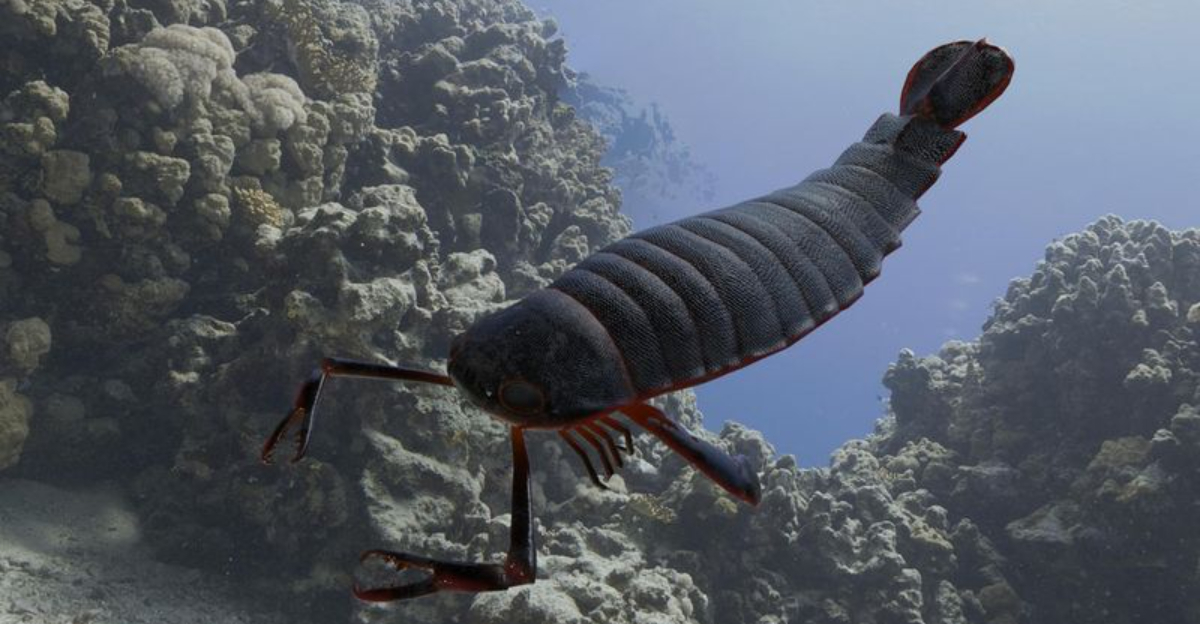Before dinosaurs roamed the Earth, there existed colossal creatures that were equally fascinating. These prehistoric giants, often overshadowed by their dinosaur successors, inhabited our planet during ancient eras.
They adapted to different environments, showcasing the incredible diversity of life long before the age of dinosaurs. Let’s dive into the world of some enormous prehistoric beasts that predate the dinosaurs.
1. Arthropleura
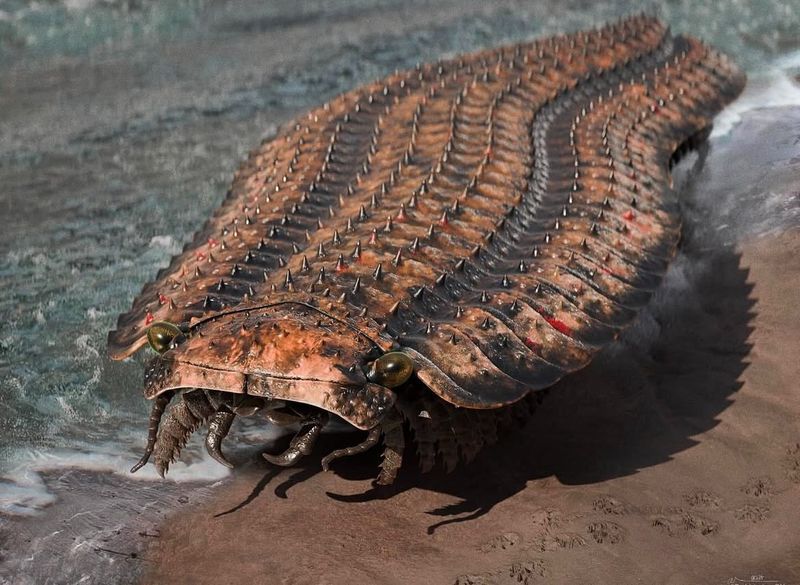
During the Carboniferous period, dense forests dominated the landscape. Amidst this greenery, an enormous invertebrate roamed the undergrowth silently.
Arthropleura, a millipede-like beast, stretched up to 2.5 meters long. Its exoskeleton shimmered with earthy tones, perfectly camouflaging it among the leaf litter.
In these ancient forests, the air was rich with oxygen, allowing invertebrates like Arthropleura to reach colossal sizes.
Moving through the foliage, it fed on the decaying plant matter that carpeted the forest floor. This gentle giant played a crucial role in breaking down organic material, recycling nutrients into the ecosystem.
Although intimidating in size, Arthropleura was likely harmless, with no evidence suggesting it preyed upon other creatures.
Its existence reminds us of a time when invertebrates ruled the earth. Discovering its fossils offers a glimpse into the dynamics of prehistoric ecosystems, where vegetation and arthropods thrived together.
2. Megalograptus
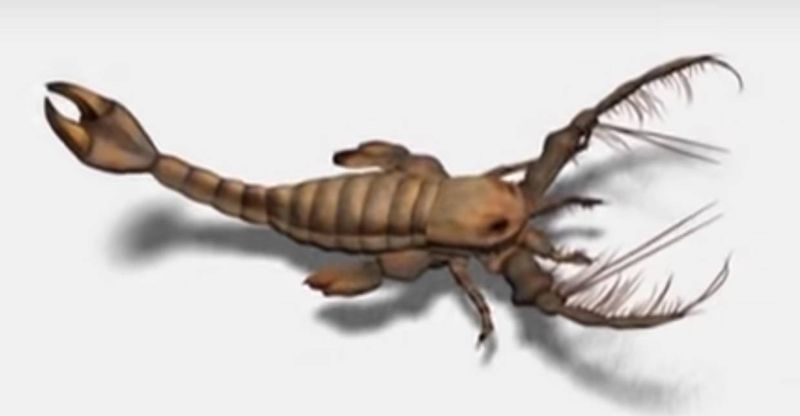
In the tranquil waters of the Silurian period, a formidable predator lurked. Megalograptus, a giant sea scorpion, was a dominant force in marine environments. With elongated pincers and a sleek, segmented body, it was both a fearsome hunter and a master of stealth.
Its habitat consisted of shallow seas, where it preyed on smaller arthropods and early fish. The creature’s powerful claws were used to grasp and subdue its prey. Megalograptus’s large eyes provided excellent vision, an advantage in the dimly lit underwater world.
Despite its fearsome appearance, Megalograptus was not invincible. Larger predators and changing environments challenged its survival.
However, its existence exemplifies the complex food webs of ancient oceans. Understanding these interactions helps us appreciate the evolutionary pathways that have shaped modern marine ecosystems, highlighting the enduring legacy of these early aquatic giants.
3. Dunkleosteus
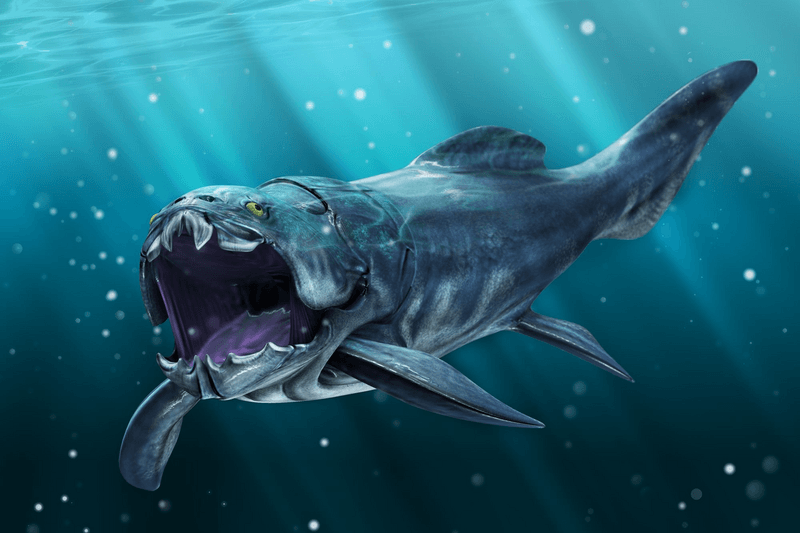
In the Devonian seas, a fearsome predator reigned supreme. Dunkleosteus, with its armored head and powerful jaws, was a formidable force. Measuring over 9 meters long, it was one of the largest placoderms of its time.
This ancient fish possessed a unique biting mechanism. Instead of teeth, it had sharp bony plates that acted like shears, capable of slicing through the toughest of hides. Dunkleosteus’s formidable bite allowed it to prey on a wide range of marine life, including other armored fish.
Despite its dominance, Dunkleosteus faced challenges from evolving marine species and changing environmental conditions.
Its fossils offer insights into the evolutionary arms race of the Devonian period. Studying this creature helps scientists understand the adaptations that enabled its success, as well as the factors that eventually led to its extinction in the perilous seas of ancient Earth.
4. Jaekelopterus
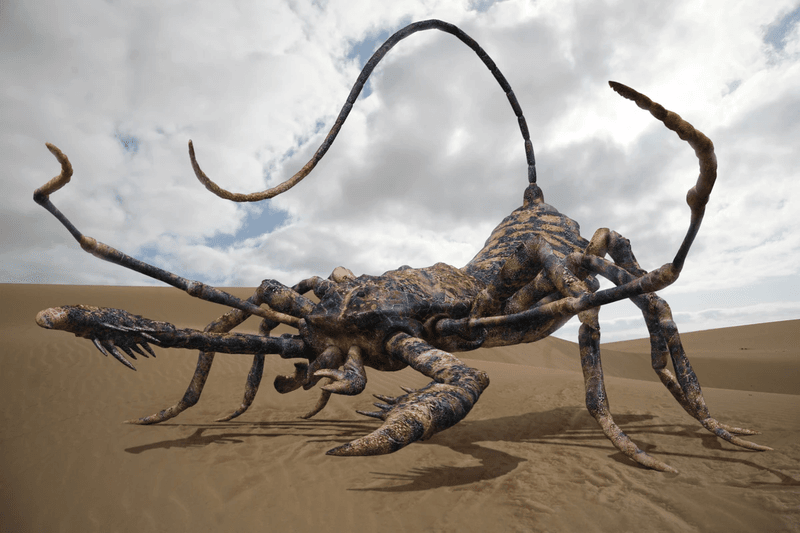
In the murky swamps of the Devonian era, an enormous arthropod thrived. Jaekelopterus, a gigantic sea scorpion, was one of the largest arthropods to have ever lived. Stretching over 2.5 meters, it was an apex predator in its aquatic domain.
With powerful pincers and a segmented body, Jaekelopterus was well-adapted to its swampy environment. It hunted a variety of prey, including smaller eurypterids and early fish, showcasing its predatory prowess. Its long, spiny tail aided in swift propulsion through water.
Despite its dominance, Jaekelopterus faced competition from rising vertebrate species. Its fossils reveal much about the biodiversity of prehistoric wetlands and the ecological niches that existed.
Exploring these ancient ecosystems sheds light on the evolutionary pathways that paved the way for future aquatic giants, illustrating the dynamic interplay of species in early Earth’s waters.
5. Pterygotus
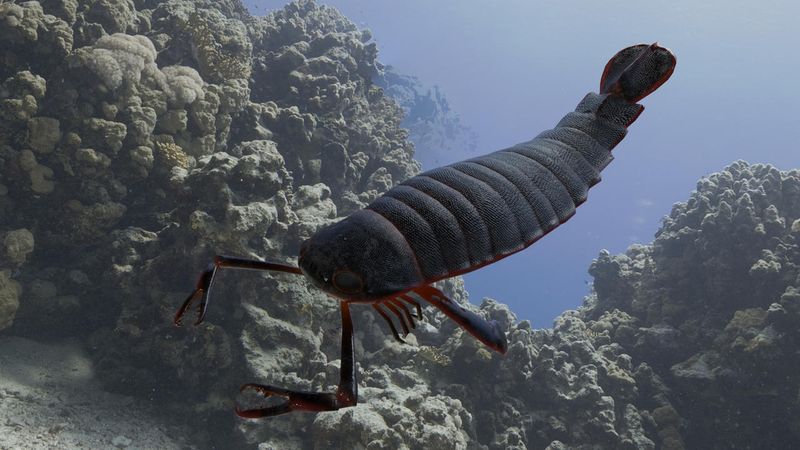
In the vast oceans of the Silurian period, a formidable creature prowled. Pterygotus, a giant eurypterid, was an adept hunter of the ancient seas. With a streamlined body and paddle-like limbs, it moved with grace and speed, surprising its prey.
Its size, reaching up to 2 meters, made it one of the top predators of its time. Pterygotus used its long, spiny appendages to capture smaller marine creatures, demonstrating its efficient hunting skills. Its large compound eyes provided excellent vision in the dim ocean depths.
Though a dominant predator, Pterygotus faced environmental shifts and competition from emerging fish species.
Its fossils offer a window into the marine ecosystems of the Silurian, revealing the complex interactions that shaped ancient food webs. Studying Pterygotus enhances our understanding of evolutionary trends in predation and adaptation, highlighting its role in prehistoric marine life.
6. Gorgonopsid
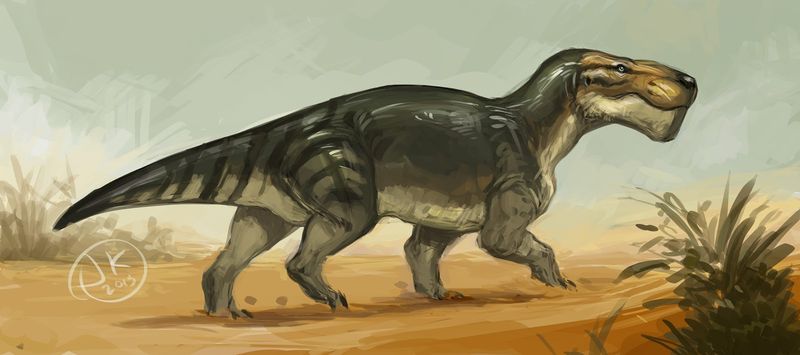
During the late Permian period, terrestrial ecosystems were home to powerful predators. Among them was the Gorgonopsid, a saber-toothed therapsid. These creatures were agile hunters, with robust builds and elongated canine teeth.
Their habitats consisted of arid landscapes, dotted with sparse vegetation and rocky outcrops. Gorgonopsids pursued various prey, including primitive reptiles and early mammal-like creatures. Their formidable jaws and teeth allowed them to deliver lethal bites, securing their place at the top of the food chain.
Despite their prowess, Gorgonopsids faced extinction during the Permian-Triassic extinction event. Their fossils provide insights into the adaptive strategies of early terrestrial predators.
Studying these creatures helps us understand the evolutionary pressures that shaped life on land before the dominance of dinosaurs. Their existence underscores the dynamic changes that have continually influenced Earth’s biodiversity throughout history.
7. Dimetrodon
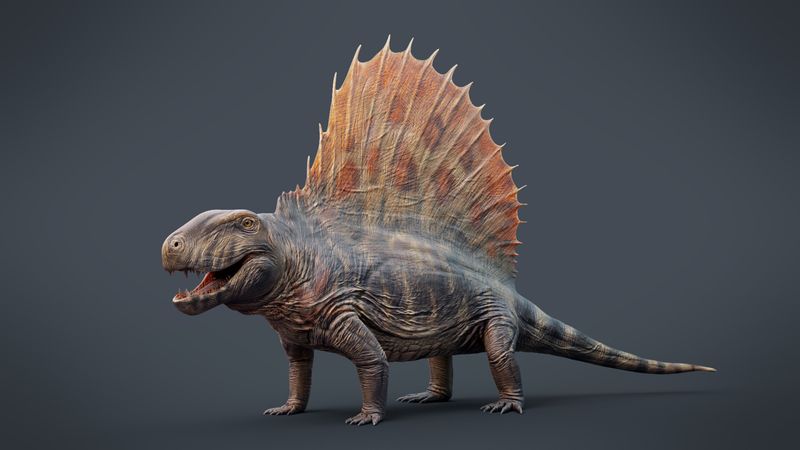
Long before dinosaurs appeared, the Permian period was ruled by a sail-backed reptile. Dimetrodon, often mistaken for a dinosaur, was a predatory synapsid. Its sail-like structure, believed to regulate body temperature, set it apart from other ancient reptiles.
Dimetrodon inhabited arid environments with rocky terrains and limited vegetation. It hunted a variety of prey, including amphibians and other smaller reptiles. Its sharp teeth and powerful build made it an effective predator.
The sail’s function has intrigued scientists for decades. Some suggest it helped thermoregulation, while others propose it played a role in mating displays.
Studying Dimetrodon provides insight into early reptilian adaptations and evolutionary biology. Despite its extinction, its presence in the fossil record highlights the diverse life forms that existed before dinosaurs dominated the Earth, offering a glimpse into the complexity of prehistoric ecosystems.
8. Edaphosaurus
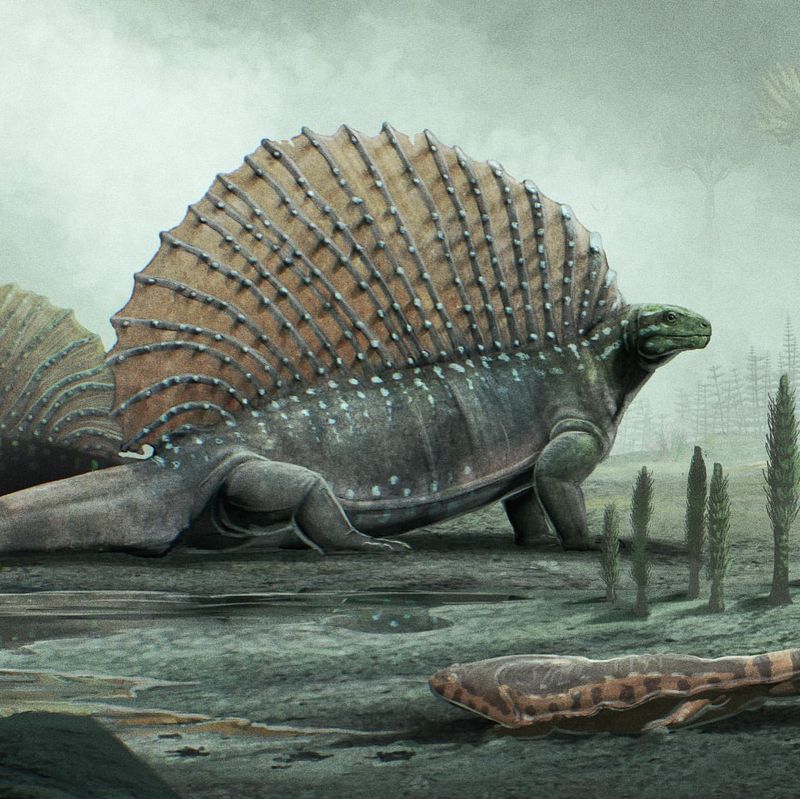
In the lush landscapes of the Permian period, a unique herbivore thrived. Edaphosaurus, with its distinctive sail-backed appearance, was an early synapsid closely related to Dimetrodon. Unlike its carnivorous cousin, Edaphosaurus was a plant-eater, grazing on the abundant vegetation.
The creature’s sail, adorned with neural spines, likely played a role in thermoregulation or social interactions.
Its strong, barrel-shaped body supported a herbivorous diet, consisting of ferns and cycads. Edaphosaurus’s teeth were adapted for grinding plant material, making it one of the earliest known large herbivores.
Edaphosaurus’s success as a herbivore paved the way for future plant-eating vertebrates, highlighting the evolutionary innovations that occurred long before dinosaurs appeared. Its fossils continue to intrigue paleontologists, offering clues to the ancient world’s complex food webs.
9. Paraceratherium
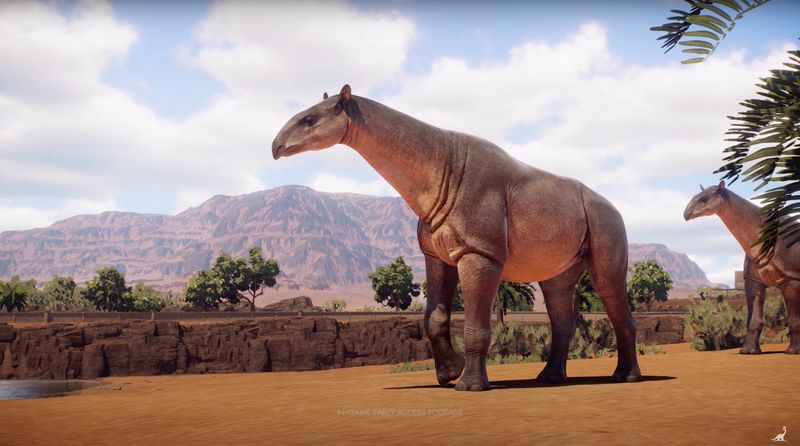
Roaming the ancient woodlands of the Oligocene epoch, a mammal of colossal size grazed serenely. Paraceratherium, also known as the giant hornless rhinoceros, was one of the largest land mammals ever to exist. Its massive body and long neck enabled it to reach high vegetation.
These gentle giants inhabited regions that are now part of Asia, thriving in environments rich with diverse plant life. Paraceratherium’s diet consisted mainly of leaves, soft plants, and shrubs, which it could access thanks to its height and strong limbs.
Despite their size, these creatures faced challenges from changing climates and competition for resources.
The study of Paraceratherium offers insights into the adaptations of prehistoric mammals and their interactions within ancient ecosystems.
Its towering presence in the fossil record highlights the diversity of life that flourished during the Oligocene, showcasing the evolutionary paths taken by mammalian giants.
10. Shastasaurus
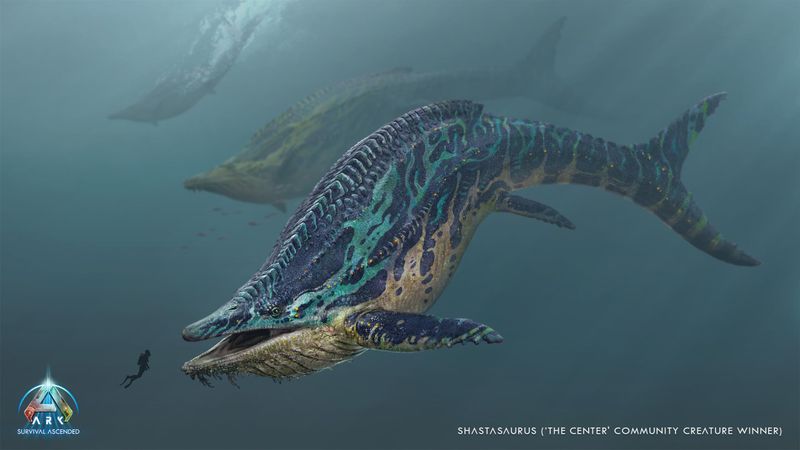
In the vast oceans of the Triassic period, a gentle giant swam majestically. Shastasaurus, one of the largest known ichthyosaurs, was a marine reptile of immense size. Unlike many of its contemporaries, it was a specialized feeder, preying primarily on soft-bodied cephalopods.
Its streamlined body and elongated snout made it an efficient swimmer, capable of navigating the open seas with ease. Shastasaurus’s anatomy reflects adaptations for deep diving and sustained swimming, essential for its lifestyle.
Despite its size, this ichthyosaur faced competition from other marine reptiles and evolving fish species. Its fossils provide valuable information about the marine ecosystems of the Triassic, illustrating the diverse adaptations of oceanic life.
Understanding Shastasaurus’s role in prehistoric seas enhances our comprehension of marine evolution, shedding light on the intricate web of life that existed millions of years ago.
11. Estemmenosuchus
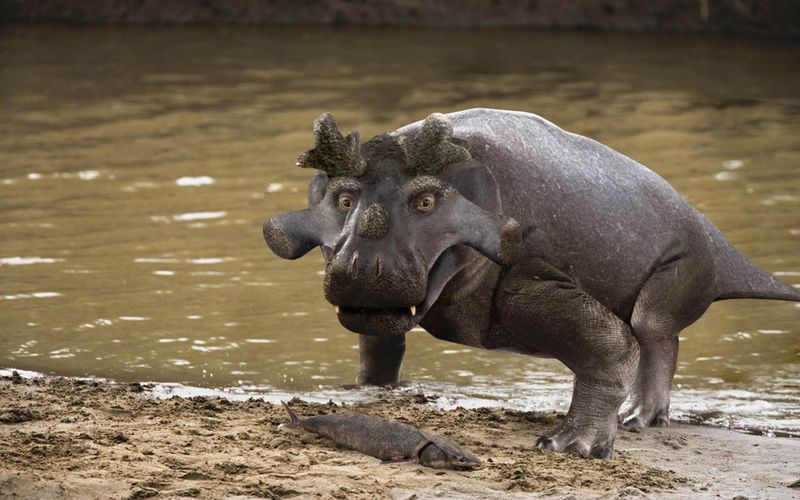
In the swampy regions of the Permian period, an unusual therapsid lumbered through the dense vegetation. Estemmenosuchus, with its bulky body and peculiar horns, was a distinctive herbivore of its time. Its large size and unique skull features set it apart from other synapsids.
This creature thrived in humid environments, feeding on the abundant plant life available in its habitat. Its robust teeth suggest a diet consisting of tough, fibrous vegetation. Estemmenosuchus’s horns may have been used for display or defense, contributing to its survival in a competitive ecosystem.
Studying Estemmenosuchus provides insights into the diversity of life during the Permian and the evolutionary pathways of early synapsids.
Its fossils reveal much about the interactions within prehistoric ecosystems, highlighting the complex dynamics of herbivorous adaptations. The existence of such creatures underscores the rich biodiversity that existed long before the age of dinosaurs.
12. Helicoprion
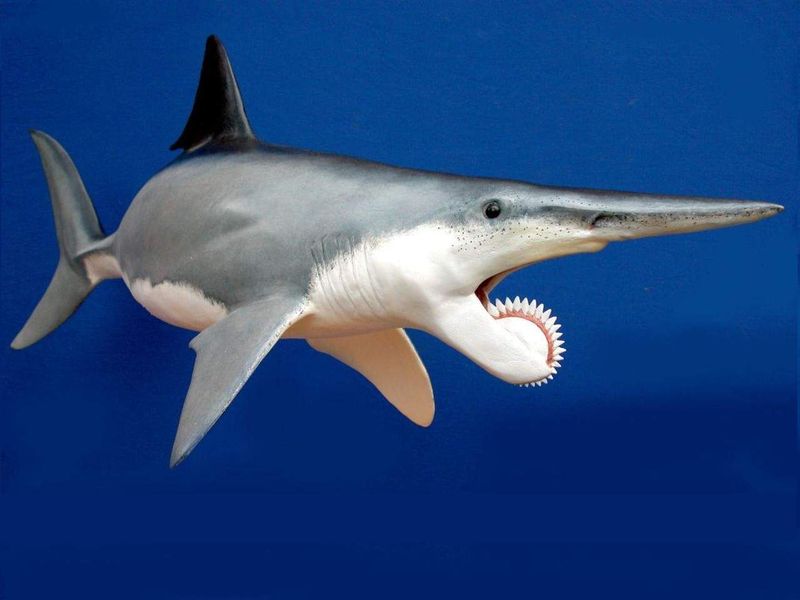
In the mysterious depths of Paleozoic seas, an unusual predator patrolled the waters. Helicoprion, known for its distinctive spiral jaw, was a cartilaginous fish that intrigued scientists for years. Its tooth whorl resembled a buzzsaw, a unique adaptation among prehistoric marine life.
This bizarre jaw structure likely aided in slicing through the soft bodies of cephalopods, its primary prey. Helicoprion’s streamlined form suggests a lifestyle adapted to swift, agile movements, essential for hunting in open waters.
Despite its peculiar anatomy, Helicoprion faced numerous challenges from competing marine predators and changing oceanic conditions.
Its fossils offer valuable clues about the evolutionary history of early cartilaginous fish and their role in ancient marine ecosystems. Understanding Helicoprion enhances our knowledge of prehistoric marine adaptations, illustrating the innovative paths nature has taken throughout Earth’s history.
13. Cotylorhynchus
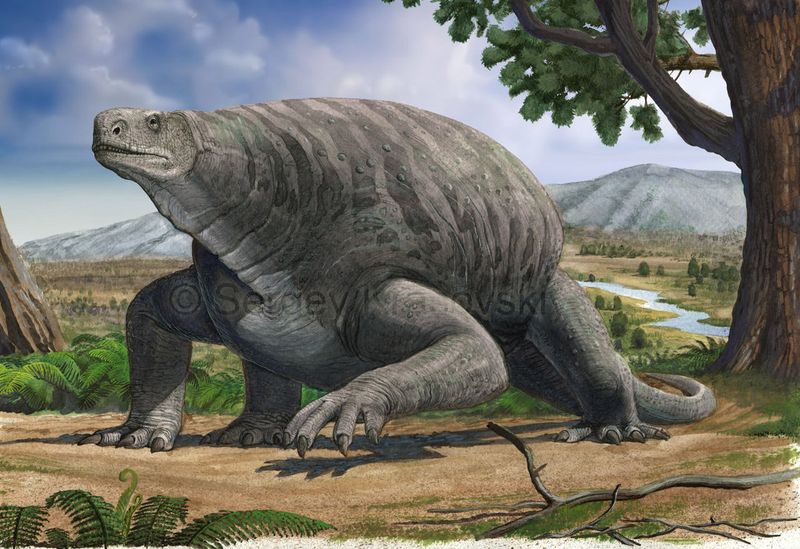
In the expansive landscapes of the Permian, a peculiar herbivore roamed. Cotylorhynchus, with its sprawling limbs and massive body, was a unique synapsid adapted to a plant-based diet. Its barrel-shaped torso housed a large digestive system suited for processing tough vegetation.
This creature inhabited regions with plentiful vegetation, such as ferns and cycads. Its robust build and sprawling gait allowed it to cover significant ground in search of food, demonstrating its efficiency as a foraging herbivore.
Despite its size, Cotylorhynchus faced ecological pressures from predators and changing climates. Its fossils provide insights into the adaptive strategies of early synapsids and the diversity of Permian ecosystems.
14. Moschops
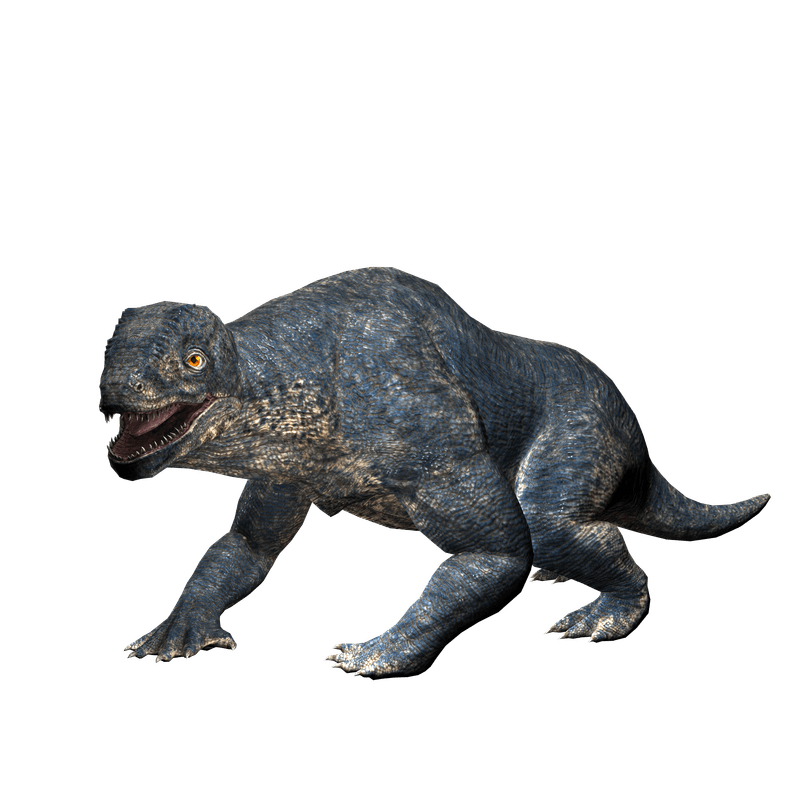
In the verdant landscapes of the Permian, a stocky creature thrived. Moschops, with its robust build and thick skull, was a herbivorous therapsid that adapted well to its environment. Its powerful jaw muscles allowed it to consume a variety of tough plant materials.
This animal lived in regions where vegetation was abundant, making it an essential part of the ecosystem. Its anatomy suggests adaptations for a grazing lifestyle, with limbs structured to support its bulky frame while foraging.
Despite its adaptations, Moschops faced challenges from predators and environmental changes. Its fossils provide insights into the diversity of Permian herbivores and their roles within prehistoric ecosystems.
Moschops reveals the dynamic interactions between species and the evolutionary pressures that shaped the development of early terrestrial life, offering a glimpse into a world long before the age of dinosaurs.

